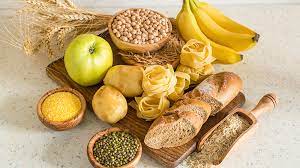Carbohydrates
Carbohydrates are the organic compounds i.e. essential biomolecules composed of carbon ,hydrogen and oxygen. The hydrogen and oxygen are in the ratio of 2:1 so they are also called "Hydrates of C...

Enzymes are complex macromolecules proteinaceous in composition, colloidal and thermolabile in nature which are used to increase the rate of chemical reaction in living organisms without itself being unchanged. In fact, enzymes are the biocatalysts (catalysts of living organisms).
The term enzyme isolated was from is extract and called as zymase that converted sugar into alcohol. This was shown by Buchner in 1897 for which he was awarded Nobel prize in 1903. Some nai 1926 show the protein nature of enzymes and was also awarded Nobel prize for proving that enzymes can be crystallized.
Types of Enzymes
On the basis of functioning in or out of living cells enzymes are of two types:
Exoenzymes: Exoenzymes are the the extracellular enzymes released by the living cells and catalyse the biochemical reaction outside the living cells for example enzymes of digestive juices, lysozymes of tears.
Endoenzymes: Endoenzymes are the intracellular enzymes produced by the living cells and function inside the living cells. For example: enzymes of glycolysis and Kreb's cycle.
Similarly, on the basis of composition enzymes can be categorised into two groups
Simple Enzymes : Simple enzymes are composed of proteins only without any additional group. For example trypsin, Urease, Pepsin etc.
Conjugated Enzymes: Conjugated enzymes are composed of proteins along with some non proteinaceous additional group for example carboxylase, transferases etc.
Except few enzymes like RNA enzymes all enzymes are made of protein which is found which is the functional unit or active part of enzyme called holoenzyme. It is generally composed of two types:
Active Site of Enzyme

The part of enzyme which gets actively involved in binding with the substrate before undergoing catalysis is known as active site of enzyme. Similarly the another small part involved in catalytic process is called catalytic site . Both binding site and catalytic site it makes the active site of enzyme and enzyme have may have one to two several active sites each consisting of few amino acids.
During the the reaction an enzyme combines with the substrate at its active site and forms of substrate enzyme- complex. These complexes later break down into you want her more end products depending on the type of chemical reaction but the enzyme remains unchanged. Enzyme activity has been found to be influenced by bhai number of factors such as temperature, PH , water concentration of substrate and enzyme. Enzyme activity is easily lost by the denaturation or degradation of protein part of enzyme which occurs by a number of factors such as heat high energy radiation size of of heavy metals and organic solvents.
Function of Enzymes